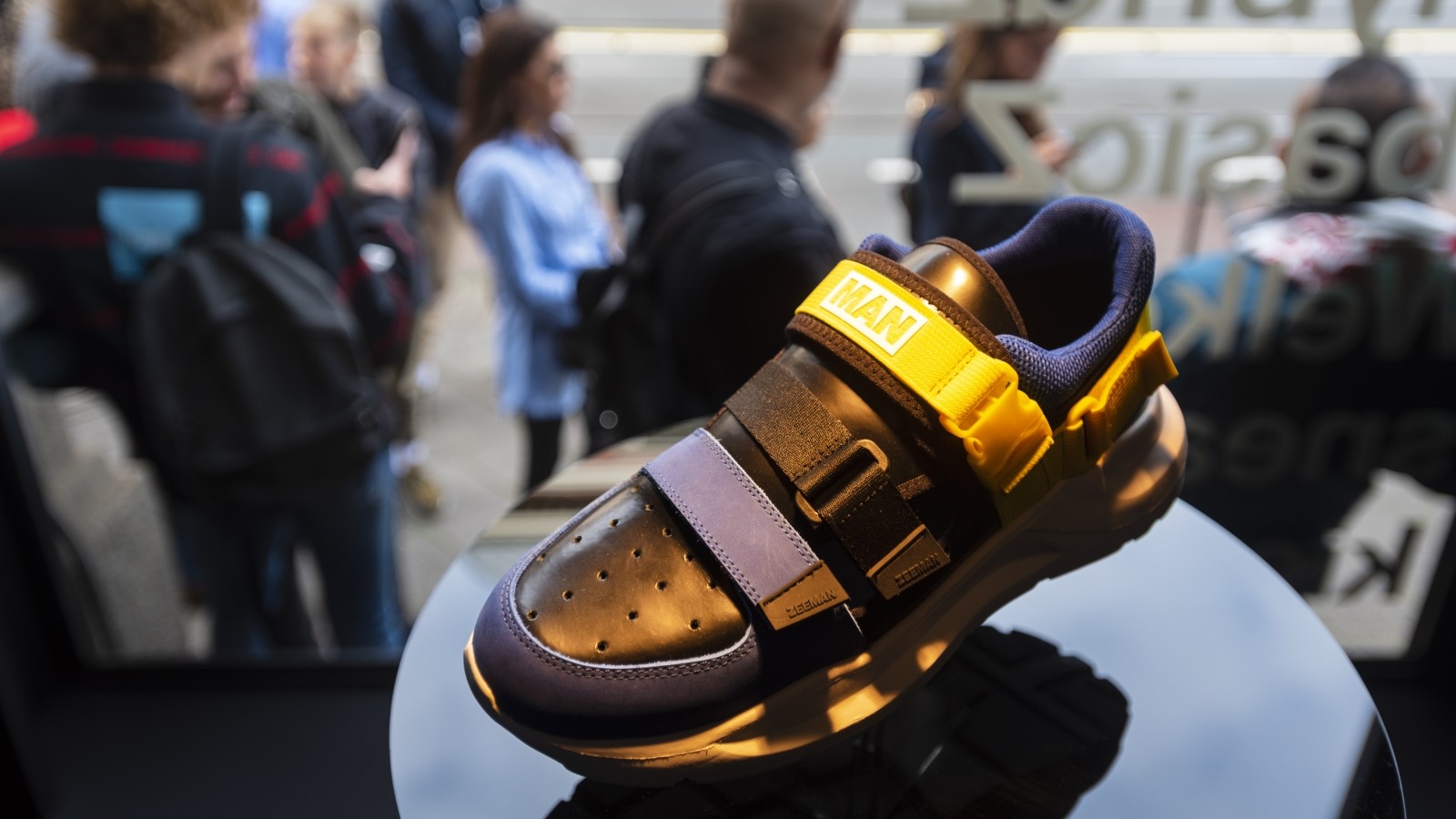
Why are some sneakers more expensive than others? To better understand consumer’s love for sneakers, Zeeman created two similar shoes: Hybrid Z, a limited edition shoe priced at 200 euros, and Basic Z, which costs 12.99 euros. To build the hype, DEPT® created a website that captured the essence of Zeeman but also conveys the story behind each shoe. The brand discovered that it’s not about the shoe itself, but actually building the hype which elevates the sticker price.
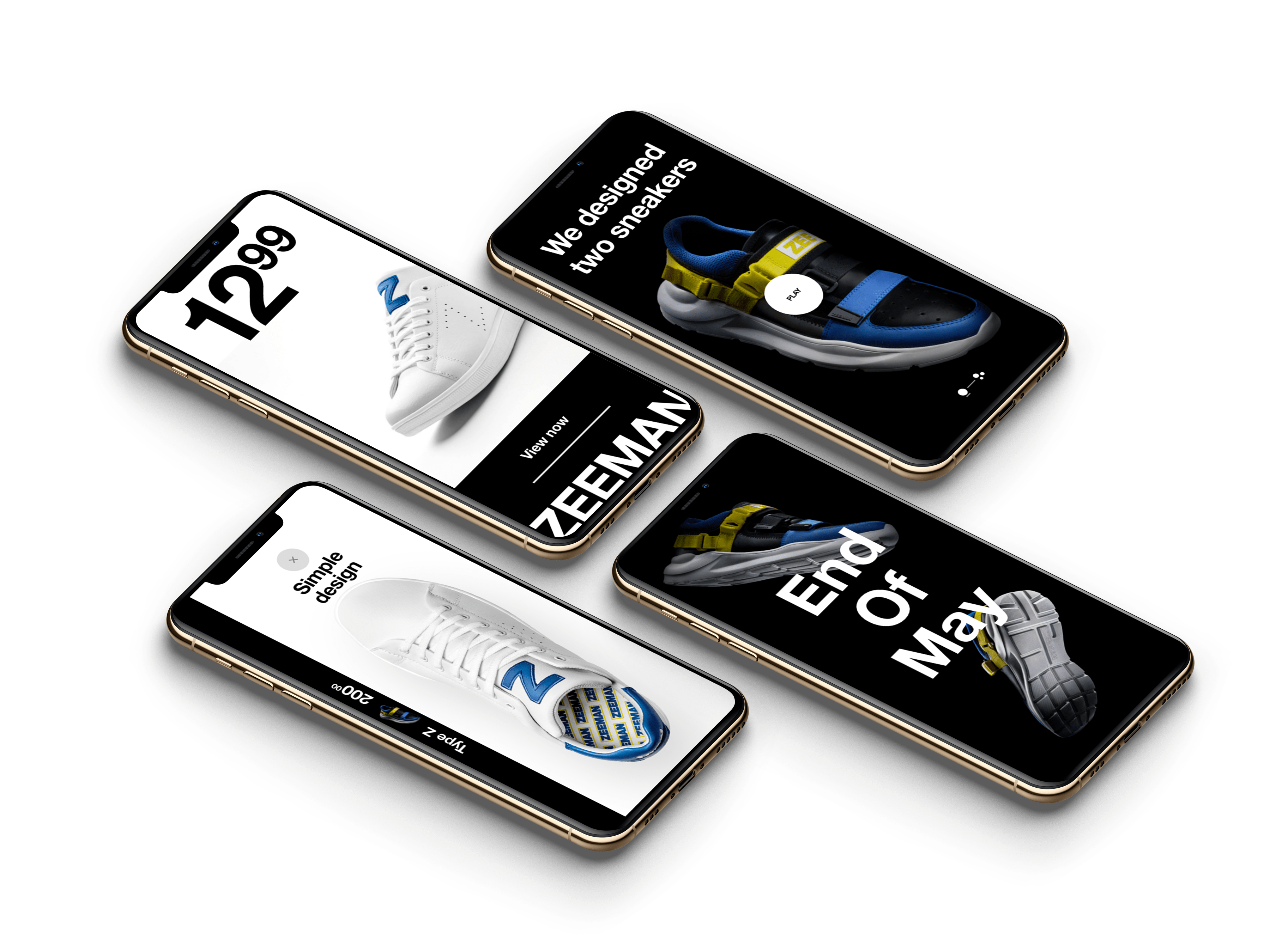
More than just a sneaker
Zeeman is an international chain which carries quality clothes for the whole family at the lowest possible price. The Dutch retailer decided to produce two similar pairs of sneakers which only differed in their design and price tag to find out why some sneakers are so much more expensive than others. Persuade, Zeeman’s creative agency, approached DEPT® to design a website that would tell the story behind both pairs of shoes and build the excitement.
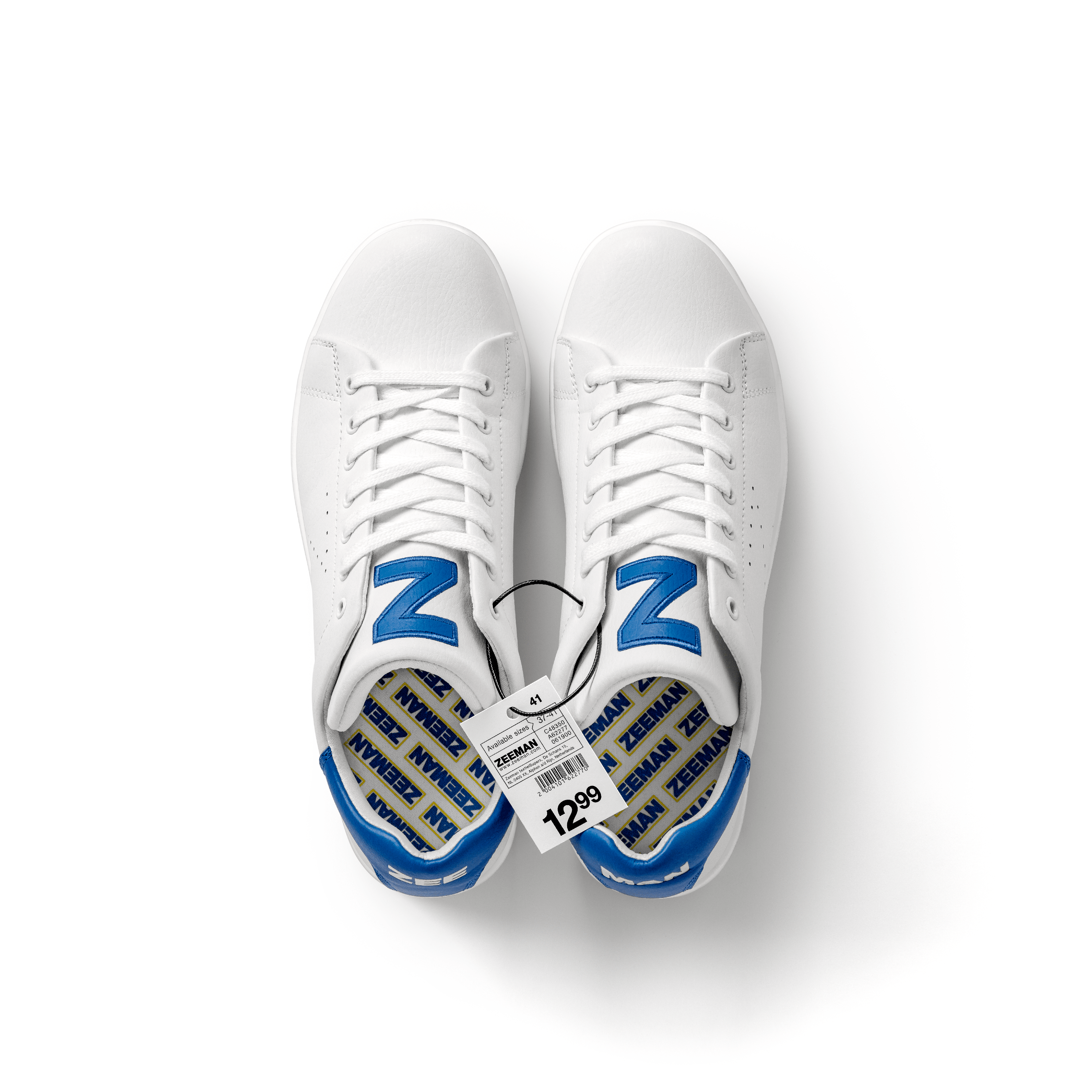
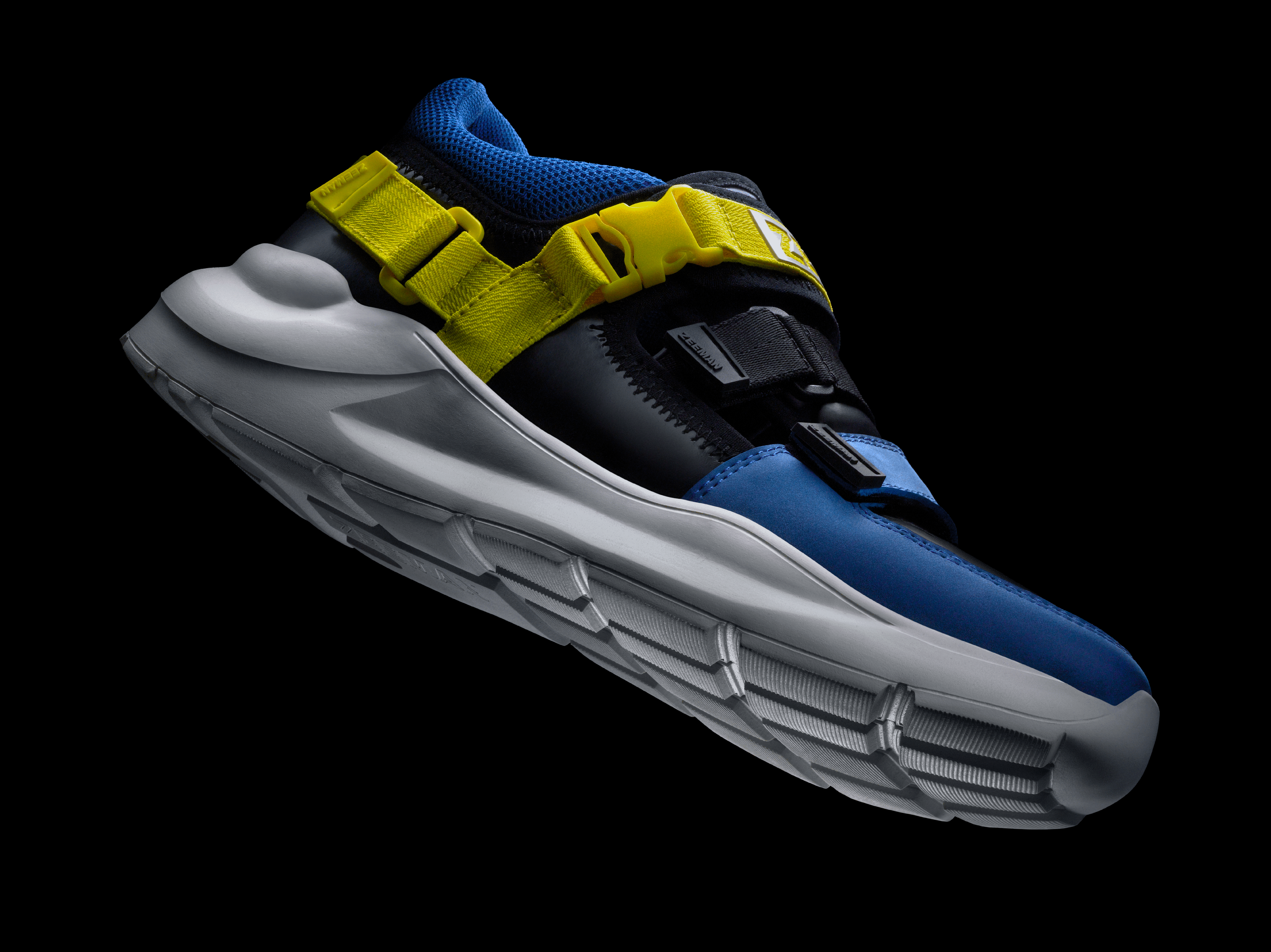
Quality marketing and the creation of scarcity helped build the hype
A website for all devices
Our goal was to design a website which enhanced the hype and created a feeling of exclusivity whilst staying true to the Zeeman brand. The design and website were created with a mobile-first approach in mind. All components built were then scaled up so the website would look great for non-mobile devices as well. The reasoning behind this was to create a perfect follow up from social media traffic.
Puzzling the pieces together, such as content production by Persuade and the design of DEPT®, was challenging in the limited time frame, but everything came together seamlessly. Our team delivered a website which could be used as a landing page for social media and advertising channels. The website is rendered purely on the client-side through React since it allowed our team to quickly set up the website the way we wanted. When a user visits the website, a Javascript file is downloaded that builds the website on a users’ device, as opposed to it being built on a remote server and then being served the pages from that server. Because of the anticipated large amount of visitors a content delivery system (CDN) was placed in front of the website. All static assets like images, video’s and fonts were served from this CDN taking away the network load from our own website. The CDN also optimised all assets decreasing their size, so users would experience an ever faster loading website.
It’s a single page application that has a homepage and two detail pages — one for each shoe. In addition to being multi-lingual, the platform tells consumers about each shoe, how they were made, the price and price explanation and where you can buy them. Lastly, one key feature our team implemented was the ability to easily switch between both product pages to better compare both shoes.
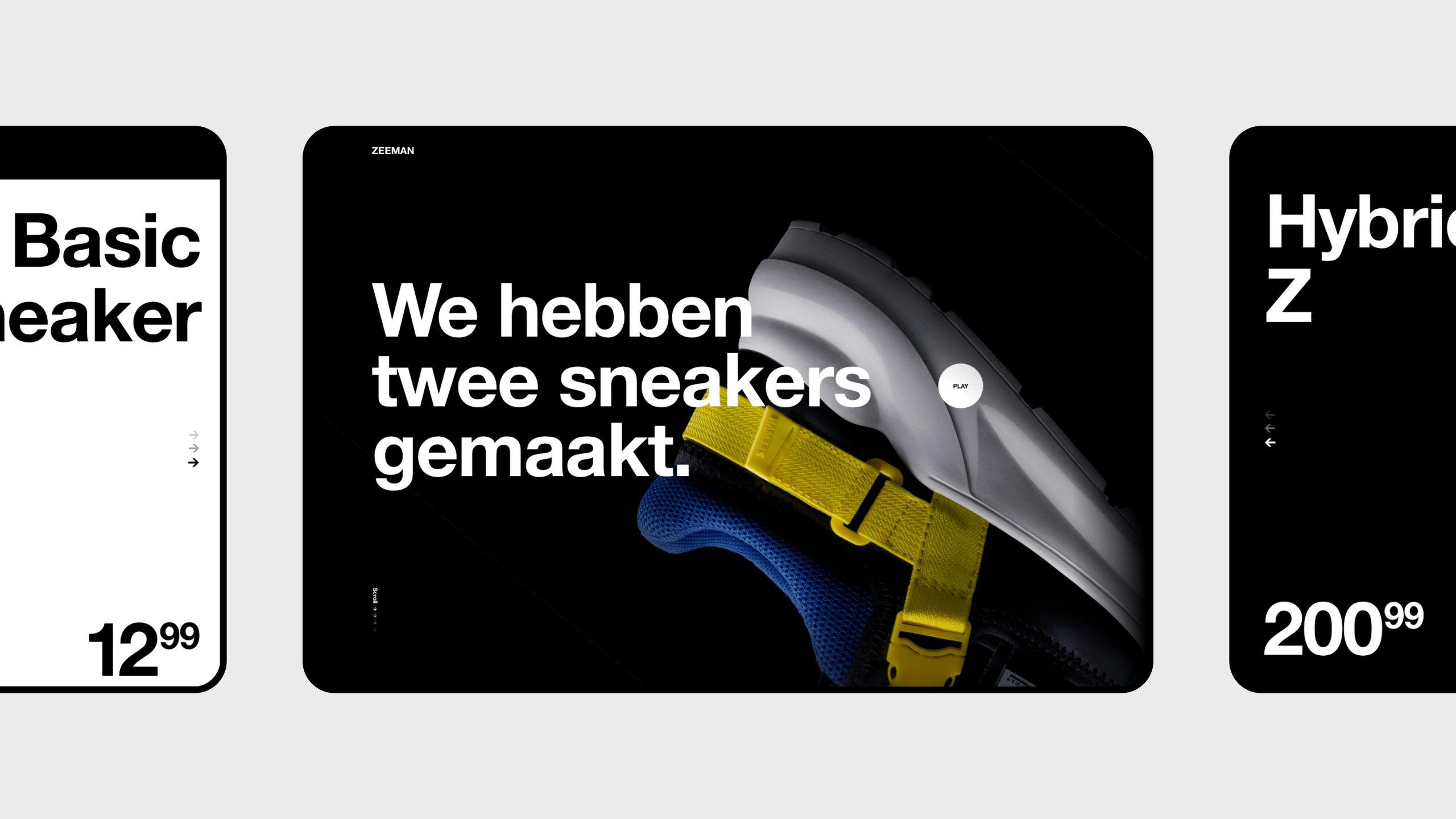
Building the hype
Persuade established a strong marketing strategy to build the hype around the release of both sneakers. For starters, once the website was live, it was picked up by twenty to thirty news media outlets and blogs. Influencers also proudly dawned the exclusive sneaker on Instagram ahead of the launch, adding to the excitement. Zeeman had established an online raffle, linked to the sneaker website, which allowed 150 lucky people to register for a pair of shoes. This filled up within an hour of it being live. However, if people missed the raffle, the company also opened two special pop-up stores for a weekend in both Amsterdam and Antwerp. So by using sophisticated marketing and the creation of scarcity, Zeeman able to build and unleash hype.
The outcome
The launch day was a huge success with over 168k unique visitors to the website, the official Zeeman site crashed because so many people wanted to buy the Basic Z sneakers, and there were lines around the block at both pop-up stores.
What makes a pair of sneakers more expensive than another? Every aspect which surrounds the shoe. For example, in this scenario, the brand only produced 500 pairs of Hybrid Z, which means they had to contract a special producer. Additionally, the boxes the shoes came in were custom-designed which adds to the total cost. Also, because the shoes were dropped last minute, shipping expenses were higher. Lastly, the marketing strategy behind the shoe is a big expense, from designing a custom website to hiring influencers to wear the shoes, all these marketing methods quickly add up. Thus, Zeeman discovered that it’s not about the shoe itself, but actually building the hype which makes them expensive.
After the launch, all the profit from Hybrid Z was donated to the charity Save Our Sisters. Additionally, the website also won the Mobile Excellence award, a prize which recognises and rewards the best practices in mobile site design.
Questions?
Principal Digital Consultant, Design & Technology
Katy White
Discover more


